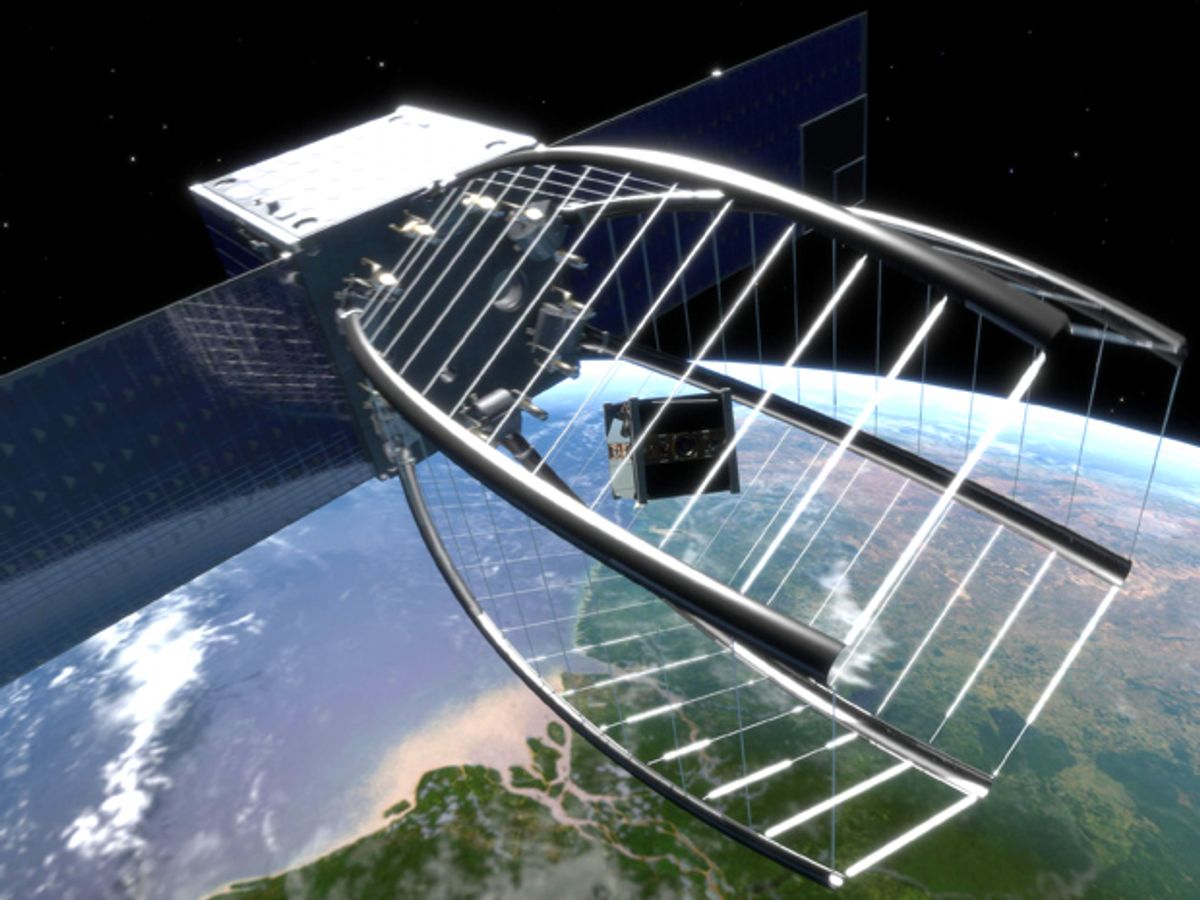Until the laser cannon on the ISS is fully armed and operational, we’re going to have to find other ways of dealing with the existing problem of space junk, or else. Earlier this year, we wrote about how the European Space Agency is experimenting with junk-snagging nets for a satellite removal mission in 2021, but EPFL’s Center for Space Engineering doens’t want to wait that long, and they're getting ready to send up “a giant Pac-Man to gobble up space debris” in 2018.
The actual resemblance to Pac-Man that this mission has is fanciful, at best, but in one respect it's absolutely accurate: what EPFL’s CleanSpace One satellite will do is waka waka up into orbit, chase down a cubesat, and then omnom it with a giant retractable net. Once the cubesat has been eaten, CleanSpace One will deorbit itself, and die a firey death in the upper atmosphere.
The specific target of CleanSpace One is SwissCube, a 10cm (1U) cubesat that’s been in a stable Earth orbit about 720km up for the last five years. Its location is generally known, but space is big, and even if CleanSpace One can find SwissCube, that doesn’t mean that its job is going to be easy:
Because of its very small size, especially compared to typical large debris (several to tens of meters long), SwissCube will be a challenge to detect. We estimate the error on the knowledge of its orbital position to be on the order of 5 km. Thus, a specific detection sequence on CleanSpace One will have to be performed to find SwissCube in space. Special detection instruments will be carried on-board and will be turned on at about 8 km away from the estimated position of SwissCube. In addition, tracking from the ground will help reduce the position uncertainties. Once the detection has taken place, it will be tracked and further manoeuvres will be performed to get closer.
Furthermore, over the last years of flight, several sudden and sharp increases in the rotation rates of SwissCube have been observed. They have been measured up to 50 deg/s. SwissCube has two antennas, one of them is 61 cm long, and final capture (grasping) could occur at conditions where Swisscube is rotating at these rates. Thus the capture system will have to operate reliably under severe tumbling conditions that are for the most part unknown before launch.
Using a net (as opposed to an arm and claw) is a great way to minimize the complications from making contact with a spinning object, but that doesn’t mean it’s going to be easy: if contact isn’t made gently, it could be bad times for both satellites, and even if contact is perfect, there’s a chance that SwissCube will be spinning fast enough that CleanSpace One’s net won’t be able to handle it.
While it’s fantastic to see actual space debris removal missions in the works, we should point out that this mission will be sending up one live satellite to remove one dead satellite. If this technology can be shrunk to cubesat size, making the vehicle relatively cheap and the ride up to space (sort of) free, that might make a system like this practical for select removal for some large objects. But, when you consider the amount of space junk that’s out there (14,000 pieces of debris above 10 cm in size as of 2011) it’s still very expensive to the point of being impractical for the large-scale debris removal that’s needed.
Evan Ackerman is a senior editor at IEEE Spectrum. Since 2007, he has written over 6,000 articles on robotics and technology. He has a degree in Martian geology and is excellent at playing bagpipes.



